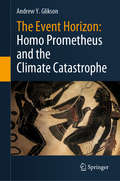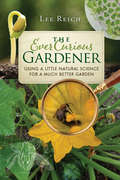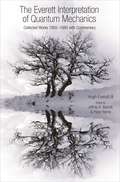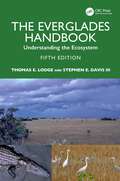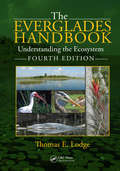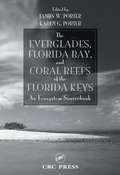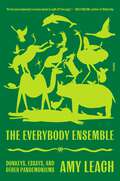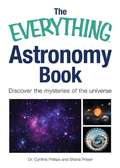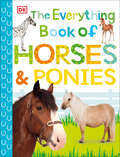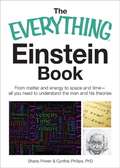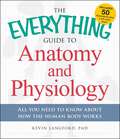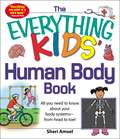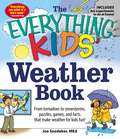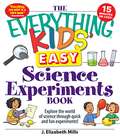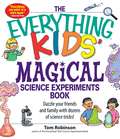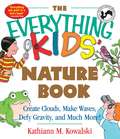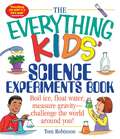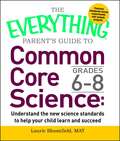- Table View
- List View
The Event Horizon: Homo Prometheus and the Climate Catastrophe
by Andrew Y. GliksonWith the advent of global warming and the nuclear arms race, humans are rapidly approaching a moment of truth. Technologically supreme, they manifest their dreams and nightmares in the real world through science, art, adventures and brutal wars, a paradox symbolized by a candle lighting the dark yet burning away to extinction, as discussed in this book. As these lines are being written, fires are burning on several continents, the Earth’s ice sheets are melting and the oceans are rising, threatening to flood the planet’s coastal zones and river valleys, where civilization arose and humans live and grow food. With the exception of birds like hawks, black kites and fire raptors, humans are the only life form utilizing fire, creating developments they can hardly control. For more than a million years, gathered around campfires during the long nights, mesmerized by the flickering life-like dance of the flames, prehistoric humans acquired imagination, a yearning for omnipotence, premonitions of death, cravings for immortality and conceiving the supernatural. Humans live in realms of perceptions, dreams, myths and legends, in denial of critical facts, waking up for a brief moment to witness a world that is as beautiful as it is cruel. Existentialist philosophy offers a way of coping with the unthinkable. Looking into the future produces fear, an instinctive response that can obsess the human mind and create a conflict between the intuitive reptilian brain and the growing neocortex, with dire consequences. As contrasted with Stapledon’s Last and first Man, where an advanced human species mourns the fate of the Earth, Homo sapiens continues to transfer every extractable molecule of carbon from the Earth to the atmosphere, the lungs of the biosphere, ensuring the demise of the planetary life support system.”
The Ever Curious Gardener: Using a Little Natural Science for a Much Better Garden
by Lee ReichAn irreverent romp through the natural science of gardening, with eye-opening insight and practical guidance for getting the most out of your plants.Curious why caressing your cucumber plants will help them bear more fruit? Or why you should grow oranges from seed even if the fruit is inedible? Or why trees need to sleep and how to help them? Join acclaimed gardener, scientist, and author Lee Reich on a journey through the delights of your garden in this laugh-out-loud treatise on the scientific wonders of plants and soil.The Ever Curious Gardener includes information on:How to maximize both flavor and nutrition in your garden bountyHelping plants thrive during droughtOutwitting weeds by understanding their natureMaking the best use of compostTips on pruning and orchard careWhy the dead language of Latin can make you a better gardener.
The Everett Interpretation of Quantum Mechanics: Collected Works 1955-1980 with Commentary
by Jeffrey A. Barrett and Peter ByrneHugh Everett III was an American physicist best known for his many-worlds interpretation of quantum mechanics, which formed the basis of his PhD thesis at Princeton University in 1957. Although counterintuitive, Everett's revolutionary formulation of quantum mechanics offers the most direct solution to the infamous quantum measurement problem--that is, how and why the singular world of our experience emerges from the multiplicities of alternatives available in the quantum world. The many-worlds interpretation postulates the existence of multiple universes. Whenever a measurement-like interaction occurs, the universe branches into relative states, one for each possible outcome of the measurement, and the world in which we find ourselves is but one of these many, but equally real, possibilities. Everett's challenge to the orthodox interpretation of quantum mechanics was met with scorn from Niels Bohr and other leading physicists, and Everett subsequently abandoned academia to conduct military operations research. Today, however, Everett's formulation of quantum mechanics is widely recognized as one of the most controversial but promising physical theories of the last century. In this book, Jeffrey Barrett and Peter Byrne present the long and short versions of Everett's thesis along with a collection of his explanatory writings and correspondence. These primary source documents, many of them newly discovered and most unpublished until now, reveal how Everett's thinking evolved from his days as a graduate student to his untimely death in 1982. This definitive volume also features Barrett and Byrne's introductory essays, notes, and commentary that put Everett's extraordinary theory into historical and scientific perspective and discuss the puzzles that still remain.
The Everglades Handbook: Understanding the Ecosystem
by Thomas E. Lodge Stephen E. Davis IIIThe Everglades Handbook: Understanding the Ecosystem, Fifth Edition is packed with scientific information about the greater Everglades ecosystem, taking into account how drastically the Everglades has changed. The book covers disciplines ranging from ecology, geology, climatology, hydrology, simplified biogeochemistry, and anthropology to conservation biology. The fifth edition of this bestselling guide presents expanded treatment of subjects where our knowledge of the Everglades and its restoration has greatly improved as well as updates throughout. This more detailed coverage includes a new chapter ‘Everglades Chemistry – A Primer’ and an expanded section on the role of human intervention in Everglades restoration, as well as numerous new graphics that bring the science to life. Written in Tom Lodge’s trademark accessible style combined with the expertise of new coauthor Stephen E. Davis III, Chief Science Officer with the Everglades Foundation, this extensively researched text is essential reading for anybody trying to understand the challenges we face in restoring this unique ecosystem.
The Everglades Handbook: Understanding the Ecosystem, Fourth Edition
by Thomas E. Lodge"This fourth edition covers the key subjects of previous editions with major updates of the new science and understanding. If there ever was a necessary book for Everglades advocates, students, authors, members of government and their agencies, The Everglades Handbook: Understanding the Ecosystem is an absolute must!" —Nathaniel P. Reed, from the Foreword “This book is far and away the best guide now in print to Everglades issues -- authoritative, well-illustrated, well-indexed, and readable." — Martha Musgrove, retired Miami Herald journalist, founding President of the Decision Makers Forum, and Southeast Regional Director of the Florida Wildlife Federation "Given the astonishing breadth and depth of scientific activities in the Everglades, Tom Lodge once again illustrates his savvy as an articulate science writer in condensing the complex dynamics of this remarkable ecosystem. …In summary, the Handbook reviews a vast literature into a compelling read about the natural treasures of the Everglades."—Evelyn E. Gaiser, Executive Director, School of Environment, Arts and Society, and Associate Dean, College of Arts & Sciences, Florida International University, modified from Wetlands (2011) 31 _____________________________________________________________________________________ The fourth edition presents expanded treatment of subjects where our knowledge of the Everglades and its restoration has greatly improved. This more detailed coverage includes: Computer modeling and its applications to the Everglades environment Quantified role of water flow in shaping the Everglades landscape The origin and evolution of fixed tree islands Sulfur and related mercury as wetland pollutants Up-to-date summary of the now quantified economic benefits of restoration, shown to be far in excess of the cost The Everglades Handbook: Understanding the Ecosystem, Fourth Edition is a scholarly reference packed cover to cover with scientific information about the ecosystem of the Everglades - taking into account how drastically the Everglades has changed. Topically, the book covers disciplines ranging from ecology, geology, climatology, hydrology, anthropology to conservation biology. Written in Tom Lodge’s trademark accessible style, this extensively researched text is essential reading for anybody trying to understand the challenges we face in restoring this unique ecosystem.
The Everglades, Florida Bay, and Coral Reefs of the Florida Keys: An Ecosystem Sourcebook
by James W. Porter Karen G. PorterProviding a synthesis of basic and applied research, The Everglades, Florida Bay, and Coral Reefs of the Florida Keys: An Ecosystem Sourcebook takes an encyclopedic look at how to study and manage ecosystems connected by surface and subsurface water movements. The book examines the South Florida hydroscape, a series of ecosystems linked by hydrolog
The Everybody Ensemble: Donkeys, Essays, and Other Pandemoniums
by Amy LeachIn short, gloriously inventive essays, Whiting Award-winning author Amy Leach's The Everybody Ensemble invites us to see and celebrate our oddball, interconnected worldHumans, please turn your guns into kazoos.Are you feeling dismay, despair, disillusion? Need a break from the ho-hum, the hopeless, and the hurtful? Feel certain that there’s a version of our world that doesn’t break down into tiny categories of alliance but brings everybody together into one clattering, sometimes discordant but always welcoming chorus of glorious pandemonium?Amy Leach, the celebrated author of the transcendent Things That Are, invites you into The Everybody Ensemble, an effervescent tonic of a book. These short, wildly inventive essays are filled with praise songs, poetry, ingenious critique, soul-lifting philosophy, music theory, and whimsical but scientific trips into nature. Here, you will meet platypuses, Tycho Brahe and his moose, barnacle goslings, medieval mystics, photosynthetic bacteria, and a wholly fresh representation of the biblical Job.Equal parts call to reason and to joy, this book is an irrepressible celebration of our oddball, interconnected world. The Everybody Ensemble delivers unexpected wisdom and a wake-up call that sounds from within. For readers of Ross Gay, Eula Biss, Anne Lamott, Annie Dillard, Ralph Waldo Emerson, and even Lewis Carroll, these twenty-four essays will be a perfect match.
The Everything Astronomy Book
by Shana Priwer Dr Cynthia PhillipsThe Everything Astronomy Book, by noted SETI Institute scientist Dr. Cynthia Phillips, helps you stargaze with authority. The book not only provides clear descriptions of all the theories of the origins of the universe, it explains the facts about the planets, moons, and stars in language anyone can understand-completely free of the usual astro-jargon. In addition, common myths are debunked: Find out why the Big Dipper is not an actual constellation, and that a shooting star isn't really a star at all!
The Everything Astronomy Book: Discover the mysteries of the universe
by Dr Cynthia PhillipsThe Everything Astronomy Book, by noted SETI Institute scientist Dr. Cynthia Phillips, helps you stargaze with authority. The book not only provides clear descriptions of all the theories of the origins of the universe, it explains the facts about the planets, moons, and stars in language anyone can understand-completely free of the usual astro-jargon. In addition, common myths are debunked: Find out why the Big Dipper is not an actual constellation, and that a shooting star isn’t really a star at all!
The Everything Book of Horses and Ponies (Everything About Pets)
by DKA must-have for every animal-loving child, this is the cutest introduction to everything kids want to know about horses and ponies.Do you dream about riding a horse and want to really get to know them? Would you like to learn how to look after a horse, what kit to use, or enter the world of equestrian sports? Discover the secrets of gorgeous horses and ponies in this fun, lively book. Packed with colorful photos, fur-tastic facts, and bite-sized information, The Everything Book of Horses and Ponies takes you into their fascinating world. Find out about favorite breeds from Shire horse to Shetland pony. Learn about horses and ponies from around the globe, and be amazed by their beautiful colorings and patterns. Young equine enthusiasts will be champing at the bit to read this wonderful treasury of horses and ponies.
The Everything Einstein Book
by Shana PriwerAlbert Einstein was the most famous and influential thinker of his time. His theories of relativity, quantum mechanics, and statistical physics gave birth to a new era in scientific thought and changed the ay people see the universe and their place in it. The Everything Einstein Book walks you through his rise from a lowly patent clerk to a groundbreaking scientist and explains the theories that brought him fame and world renown. Covering everything from photoelectric effect to the unified field theory, this book answers all your questions about the genius, his work, and the age that influenced him.
The Everything Einstein Book: From Matter and Energy to Space and Time, All You Need to Understand the Man and His Theories
by Shana PriwerA Simon & Schuster eBook. Simon & Schuster has a great book for every reader.
The Everything Guide to Anatomy and Physiology (The Everything®)
by Kevin LangfordA plain-English guide to the human body and how it worksLooking for a companion text for your anatomy and physiology class? Need a refresher for a course you took years ago? Or are you just interested in learning more about how the human body works? Professor Kevin Langford walks you through all the structures of the body, from cells to organs to systems and how they interact. This all-in-one guide covers all you need to know about anatomy and physiology, including:Scientific terminology for organs, systems, and functionsThe functions of each system in the bodyHow systems are formed, from conception through adulthoodDiseases and disorders that affect each system With simple explanations and dozens of illustrations, The Everything Guide to Anatomy and Physiology provides a detailed look into the wonders of the human body.
The Everything KIDS' Human Body Book: All You Need to Know About Your Body Systems - From Head to Toe!
by Sheri AmselA book about the most interesting thing on earth--you!What happens to food after you eat it? Why is your blood red? How do your bones grow?Your body is an amazing machine. Every second of the day and night--without you even knowing it--your body is busily working to keep you running smoothly. When you think about how complicated the human body is and how little goes wrong, it is really an incredible feat! So how does your body do it all?The Everything Kids' Human Body Book is the expert answer to all your questions--from the tips of your toes to the top of your head, you will learn the hows and whys of the human body. Author Sheri Amsel takes you on a journey through the body, with information on:The muscles--from your biceps to your heartYour nerves and how they transmit messagesHow your skin heals itselfBones, joints, and other things you shouldn't breakBlood, guts, and the circulation systemHow your body digests food (it's not always pretty!)Why you need air and how breathing works With more than 30 different puzzles and games about the human body, plus information on how to take care of your own body with good nutrition, exercise, and more, The Everything Kids' Human Body Book is the ultimate way to learn how the body works--inside and out!
The Everything KIDS' Weather Book: From Tornadoes to Snowstorms, Puzzles, Games, and Facts That Make Weather for Kids Fun! (Everything Kids)
by Joseph Snedeker<p>Get ready for a 100% chance of scientific fun! <p>Have you ever wondered what happens in the eye of a tornado or how hurricanes gain their strength? From lightning and snow-day blizzards to rainbows and monsoons, The Everything Kids' Weather Book gives you an exciting look into all the action that happens in the sky, including: The difference between cirrus and stratocumulus clouds; How meteorologists predict the weather; What the term "a perfect storm" means; How to build a weather station of your own; Why storms depend on how cold and warm fronts interact; How to create weather experiments at home; The effects of global warming on our planet. <p>Filled with hundreds of exciting facts and thirty fun weather puzzles and games, The Everything Kids' Weather Book is perfect for finding out how a barometer works, which cloud is a nimbus cloud, what causes hailstorms - and everything in between!
The Everything Kids' Easy Science Experiments Book: Explore the world of science through quick and fun experiments! (Everything® Kids)
by J. Elizabeth MillsWhy is the sky blue? What makes a balloon float? Why can't I see in the dark?You can discover the answers to these questions and more with The Everything Kids' Easy Science Experiments Book. Using easy-to-find household materials like soda bottles and flashlights, you can build bubbles, create plastic--even make raisins dance! All of the experiments are kid-tested and educational--but more importantly, they're tons of fun! These quick and easy experiments help you to:Explore your five senses.Discover density and sound.Delve into seasons, life cycles, and weather.Investigate electricity and light.Study the solar system and landforms.Examine matter and acids/bases. This is the perfect book for a rainy Saturday, a lazy vacation day, or even after school. You'll have so much fun conducting the experiments, you'll forget that you're actually learning about science!
The Everything Kids' Magical Science Experiments Book
by Tim Robinson"The Everything Kids' Magical Science Experiments Book" is filled with over 50 science experiments that bend the rules of time, space and logic so far, they appear to be magical.Kids can conduct these experiments safely in the home, unlocking the mysteries of experiments that: you can create using common food items; will help you explore the "magic" of heating and cooling; you can conduct in your front or back garden; have to do with the senses and human body; probe physical processes and changes; and, delve into chemical and biological processes and changes.Packed with 30 "magical" science-related puzzles and over 50 experiments that are sure to get kids excited about chemistry, science and physics, "The Everything Kids' Magical Science Experiments Book" is the perfect tool for anyone who is awed by the magic of science.
The Everything Kids' Magical Science Experiments Book: Dazzle your friends and family by making magical things happen!
by Tim RobinsonDazzle your friends and family with dozens of science tricks!Kids may not clamor to study science and physics, but they sure enjoy anything that has to do with slime, invisible ink and obtaining the ability to make things disappear. With The Everything Kids' Magical Science Experiments Book, kids will be able to bend the rules of time, space and logic by performing over 50 "magical" science experiments. Parents will love the fact that their kids are learning while having fun, by performing feats such as:Changing salt to sugarCreating a real life genie in a bottleCreating and writing with invisible inkMaking a person stay seated, just by using their pinky fingerSealing a punctured balloon with a pennyChanging Mentos candy into sodaThe Everything Kids' Magical Science Experiments Book is packed with 30 "magical" science-related puzzles and over 50 experiments that are sure to get kids excited about chemistry, science and even physics!
The Everything Kids' Nature Book
by Kathiann M. KowalskiKids love nature, and with The Everything Kids' Nature Book, they'll keep busy for hours. Packed with information and activities, kids will: roam the natural world of their own backyard; discover how birds, bats, and bugs pollinate the landscape; learn about life on the edge of the sea; and more!
The Everything Kids' Nature Book: Create Clouds, Make Waves, Defy Gravity and Much More!
by Kathiann M KowalskiThe natural world holds secrets under every rock and around every tree. If you've ever wondered what life is like through a microscope, telescope, or with the naked eye--you'll love this book!You will:Run with the antelope across the American plains and learn about the food chain.Climb with a monkey to the highest tree in the rainforest and discover how photosynthesis keeps leaves green.Sink to the bottom of the ocean to follow creatures who have adapted to life in total darknessTravel with a meteor at speeds up to 160,000 miles per hour.Burrow with the earthworms in your own backyard. Through it all, you'll find out how things synergize, regenerate, and evaporate--and lots more! And don't worry about the big words--they are all defined and explained with familiar examples in this fascinating trip through the natural world.
The Everything Kids' Science Experiments Book: Boil Ice, Float Water, Measure Gravity-Challenge the World Around You! (Everything® Kids)
by Tom RobinsonScience has never been so easy--or so much fun! With The Everything Kids' Science Experiments Book, all you need to do is gather a few household items and you can recreate dozens of mind-blowing, kid-tested science experiments. High school science teacher Tom Robinson shows you how to expand your scientific horizons--from biology to chemistry to physics to outer space. You'll discover answers to questions like: Is it possible to blow up a balloon without actually blowing into it? What is inside coins? Can a magnet ever be "turned off"? Do toilets always flush in the same direction? Can a swimming pool be cleaned with just the breath of one person? You won't want to wait for a rainy day or your school's science fair to test these cool experiments for yourself!
The Everything Parent's Guide to Common Core Science Grades 6-8: Understand the New Science Standards to Help Your Child Learn and Succeed
by Laurie BloomfieldTake the mystery out of middle-grade science!The Common Core, a new set of national educational standards, has been adopted by 45 states across the nation. But if you learned about science the "old" way, you may be having a hard time understanding what your kids are bringing home from school--and why. With information on Next Generation Science Standards and practice exercises and experiments, you'll learn:The rationale behind Common Core standardsThe major scientific concepts your child will be learning at each grade levelThe new requirements for learning concepts and applying them in practical waysHow the Next Generation Science Standards relate to the Common Core Math and English Language Arts standardsHow to help your child with homework and studyingThe Everything Parent's Guide to Common Core Science: Grades 6-8 will give you the confidence to help your kids meet the science expectations for their grade level, excel at school, and prepare for high school and beyond.
The Everything® Astronomy Book
by Cynthia Phillips Shana PriwerThe Everything Astronomy Book, by noted SETI Institute scientist Dr. Cynthia Phillips, helps you stargaze with authority. The book not only provides clear descriptions of all the theories of the origins of the universe, it explains the facts about the planets, moons, and stars in language anyone can understand-completely free of the usual astro-jargon. In addition, common myths are debunked: Find out why the Big Dipper is not an actual constellation, and that a shooting star isn’t really a star at all!
The Everything® Einstein Book
by Cynthia Phillips Shana Priwer- His childhood curiosities and unusual education- The scientific climate of Einstein's time and the people who influenced him- His theories, their impact, and their potential for future application- Einstein's philosophies on war, religion, and pacifism- Einstein in America
The Everything® Kids' Magical Science Experiments Book
by Tom RobinsonKids love magic'and they also love making cool science projects. Now they can do both at the same time! With The Everything? Kids? Magical Science Experiments Book, kids can bend the rules of time, space, and logic by performing more than 50 ?magical? and awe-inspiring science experiments. Inside, kids learn such tricks as: ? Changing salt to sugar ? Summoning a real life genie in a bottle ? Creating and writing with invisible ink ? Making a person stay seated, just by using their pinky finger ? Sealing a punctured balloon with a penny ? Turning candy into soda And parents will love the fact that their kids are learning while having fun with The Everything? Kids? Magical Science Experiments Book.
